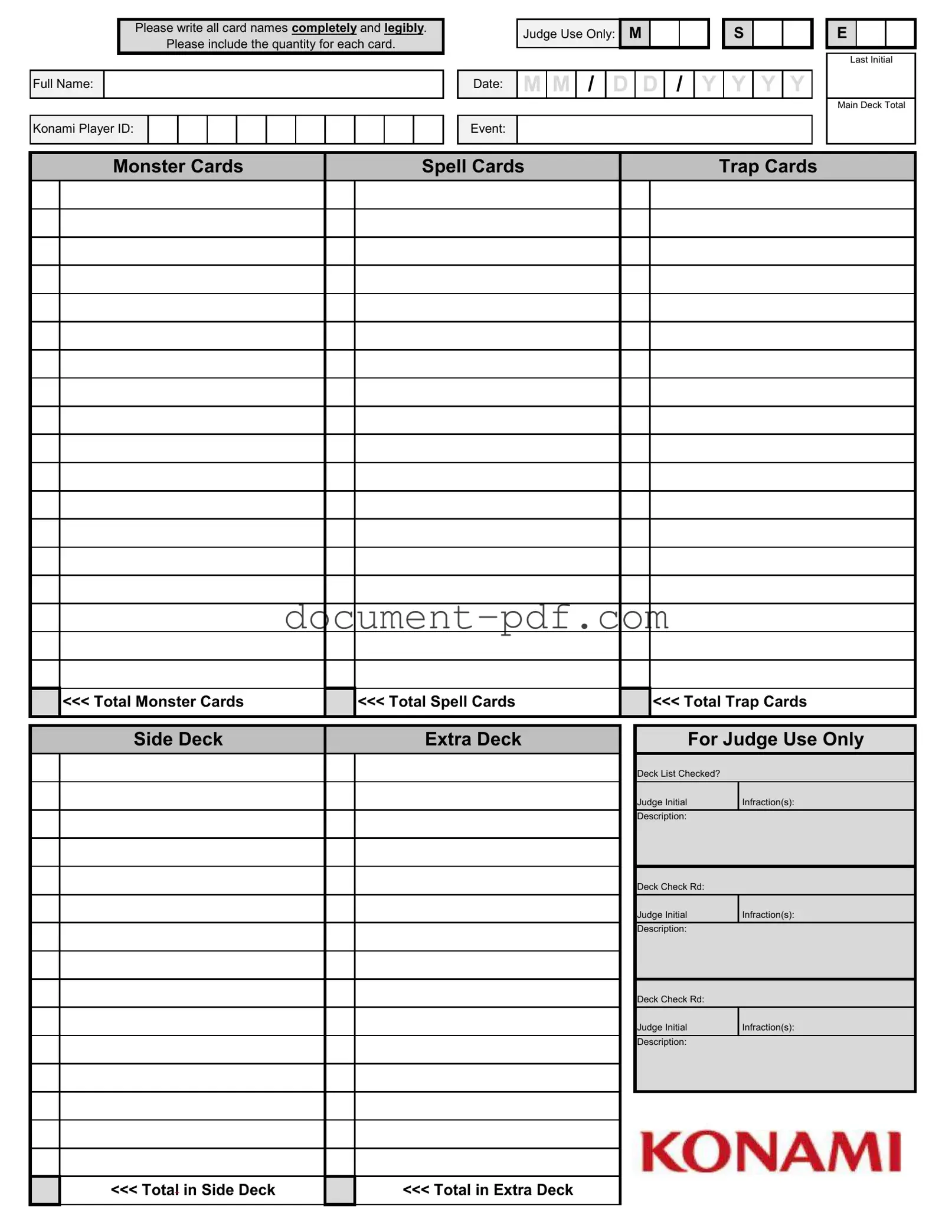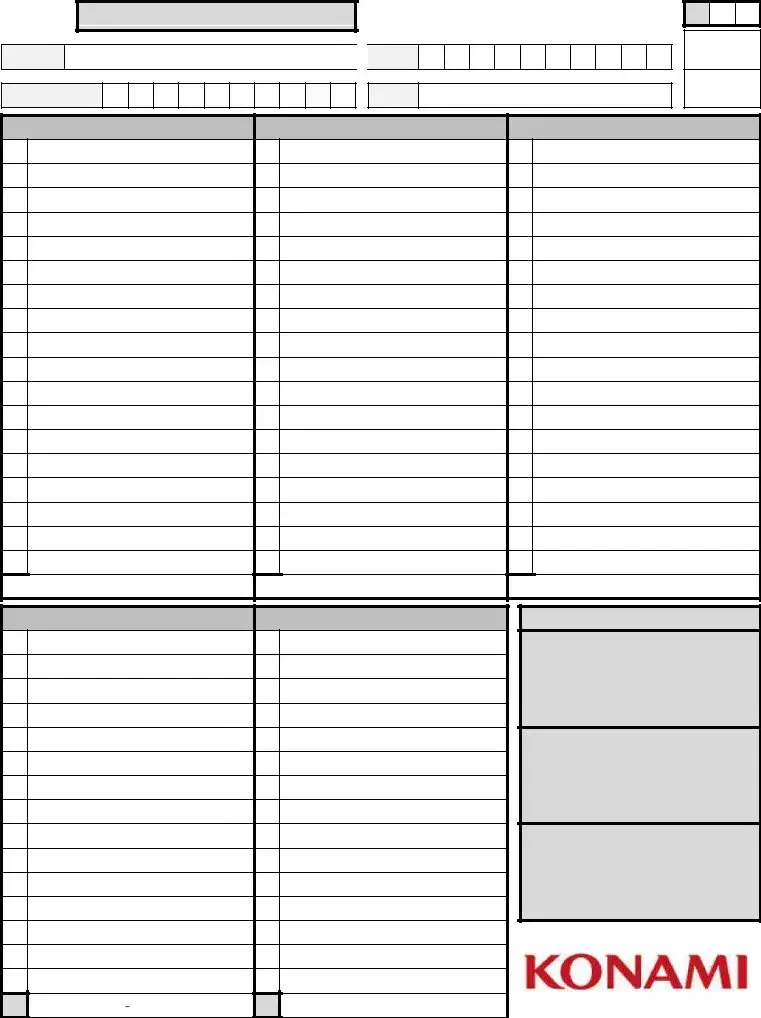The Konami Decklist form serves as an essential tool for players participating in official tournaments and events. This form requires participants to provide a complete and legible list of all cards in their decks, ensuring clarity and transparency during gameplay. Each card must be listed with its corresponding quantity, which helps judges verify compliance with tournament rules. Key information such as the player's full name, Konami Player ID, and event details must be included at the top of the form. Additionally, the form features sections for the main deck, side deck, and extra deck, allowing for a comprehensive overview of the player's card composition. Judges utilize this form to check the deck for any infractions, documenting any issues that may arise during the event. The form also includes spaces for judges to record their initials and notes on any infractions, ensuring proper oversight throughout the tournament. Accurate completion of the Konami Decklist form is crucial for maintaining the integrity of competitive play.




 <<< Total Monster Cards
<<< Total Monster Cards <<< Total Spell Cards
<<< Total Spell Cards <<< Total Trap Cards
<<< Total Trap Cards